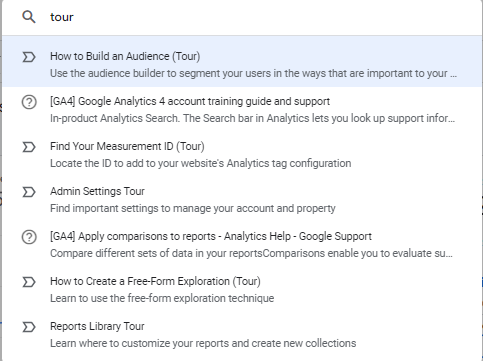Google Analytics or: How I learned to stop worrying and love the data
Season 5, Issue 5 - First guest of the season!
The big news about Google Analytics releasing GA4 (and forcing everyone to migrate over to it) has caused quiet a range of reactions. I’ve seen some marketers lament that their favourite features will no longer be available within GA (but instead will require the use of a different Google tool), or that entire products will no longer be available (I found out after recommending it last week that Google Optimize is being sunsetted!), though some marketers are excited for it and all the new capabilities.
As someone who has always had access to GA and used it on a weekly to monthly basis to check things but has never been a deep GA afficianado, I wanted to jump more into GA and ask around about what actual GA experts think.
What are the major changes?
For the non-technical marketers, the big change is how GA is collecting data and what type of data is being collected. But what does this matter for your day-to-day?
First of all, you’re going to need to migrate to GA4 before July 1 - if you’re freaking out about not knowing how to do this, Google have released a guide. Credit to Google for doing a really thorough step by step guide, don’t be scared to give it a crack yourself, I did it for a testing site I have and it was really easy.
Secondly, the home dashboard is the same, so if you’re someone who just logs in, has a look at high level stats, and logs back out, your experience is very unlikely to change.
Deeper than that, a major change is to the reports - navigation and names have changed. Check out this article for a comprehensive overview of changes in reporting.
You are also probably going to want to re-set up all of your events/conversions as there’s now new capabilities which means there’s no 1:1 match for these between Universal GA and GA4. If you have both an app and a website, you’ll also want to enable Google Signals as this will enhance cross-platform data collection and reporting.
Lastly, before you switch over (if you haven’t already), it might be good to do a stocktake of the way your current GA is set up (and what you’ve got connected to it), that way you can make sure you haven’t forgotten anything when you configure GA4.
An interview with Marc Girod
Since I’m not a deep expert in GA, it’s only right to bring in someone who is. Marc spent more than 8 years at Google working on GA, and now offers consulting and training for GA.
Kayla: For marketers who might "own" Google Analytics in their org but aren't necessarily well versed in it, what are your top recommendations for where to look or what features to use to get the most information out of it?
Marc: In any Google Analytics property, there are two types of information you must collect: traffic source data (where do my users come from?) and conversion data (do my users do what I would like them to do?).
To collect traffic source data, you need to tag the links that lead to your website. If you use Google Ads, SA360, or DV360, this is automated when you enable auto-tagging. For other types of ads, such as Facebook Ads, Instagram Ads, TikTok Ads, email campaigns, etc, you must tag the destination URLs with UTM parameters.
To collect conversion data, you need to define precisely the conversions that impact your business. This could be purchases, lead generation, newsletter subscriptions, time spent on your website, or anything else that is important to your business. Once you have defined your conversions, you can match them with the conversions you collect in Google Analytics.
K: What is something that marketers are doing in their other digital marketing tasks that are causing them to miss out on value in GA?
M: The most common mistake that marketers make is to track their ad conversions in the ad platform itself, such as Google Ads, Facebook Ads, or TikTok Ads. This is because when you do this, each platform will try to attribute the conversion to itself. This can lead to double-counting of conversions, which can skew your data and make it difficult to track your true performance.
To get the most accurate data, you should track your ad conversions in a dedicated analytics platform, such as Google Analytics. This will ensure that your conversions are only counted once, and that you have a complete view of your marketing performance.
K: GA4 is just around the corner and for marketers who again own GA but don't necessarily specialise in it, it's being viewed as quite a daunting change. What would be your tips for marketers who need to make this transition - and any "gotchas" to look out for?
M: One important new feature of GA4 is the ability to choose between different attribution models. I recommend using the DDA model over a last-click attribution model.
However, it's important to note that in the GA4 UI, you'll need to go to the ADVERTISING section to see your conversions using DDA instead of the REPORTS section, which always uses the last-click attribution model.
K: On top of GA, Google has a lot of other tools for marketers. What are some of your favourites?
M: I would recommend using Google Tag Manager for implementing GA tags and other marketing tags like the Meta pixel. To gain access to organic keyword data from Google search, use Search Console and link it to GA4! And while Google Optimize will be deprecated soon, a great alternative for creating A/B tests is A/B Tasty.
How hard is it to learn Google Analytics?
If you don’t have access to your company’s GA (or you want to learn it), Google actually has a number of free courses with a demo account you can access which takes data from their merch store. This is also how I found out you can buy a “Google campus bike” (the basket holds business cards and it’s $55)
I actually took all of the courses available (there’s only 3 + accreditation) over the weekend to see how much has changed and whether there were some cool things I’d always been missing out on. It honestly didn’t take that long and was very approachable - the time allotted for each course is easily more than double what it actually took me to do, and the accreditation test only took me 15 minutes but they say to allow 75. If you’ve always thought you weren’t “data minded” enough, or were put off by these time estimations, I would say just go for it. Block it out in your calendar for half a day as L&D and do it during work!
Whenever I learn a new platform I always skip the click through tours (I’m impatient) but I actually went through it all for this issue, and I did think the very last tip was pretty cool - if you type “tour” into the search bar, you can see what click through tours they have available.
Clicking through the demo account can be a great way to get ideas for your own setup too.
News from the week
Ok I legitimately laughed out loud when I saw this headline: Starting today, Twitter says all advertisers must obtain verified accounts which links to this more in depth piece.
Moving forward, it seems that anyone wanting to post an ad or promote a tweet will have to cough up $8/month for Twitter Blue, or $1,000 per month to be recognized as a verified organization… At any rate, it’s difficult to see how this move will do anything other than dissuade advertising spend on Twitter.
A friend shared this template/framework for evaluting landing page copy, feel free to make a copy of it for your own use.
A great blog from a marketer who evaluated Expedia’s current campaign then made her own ads for Expedia and then tested them against Expedia’s own ads. My only criticism is an overly broad usage of the phrase “create a category”.
Tinder’s global campaign is aiming to change the perception of the app as being for just hookups to also being somewhere to meet long term partners. It’s hard to find all the campaign images in one place so here’s a few links with different highlights from the campaign: one and two and Tinder’s blog about it.
I’m going to put out a special issue on Friday, so I’ll see you in your inboxes in just a few days!








